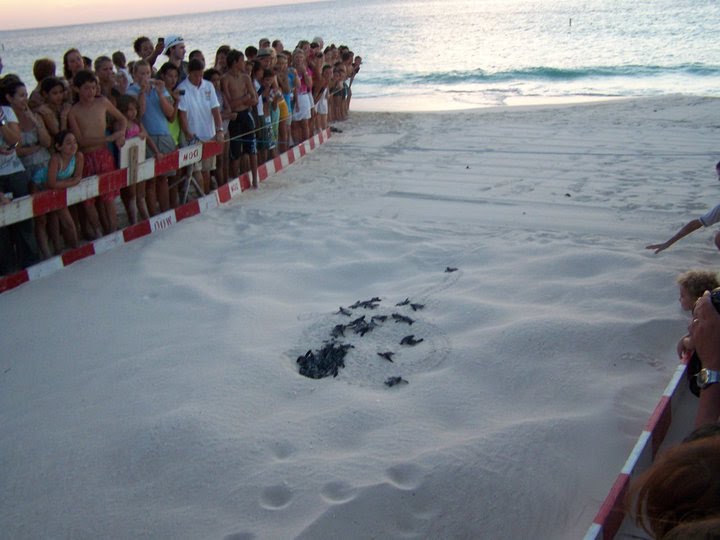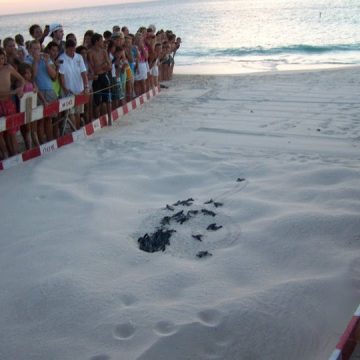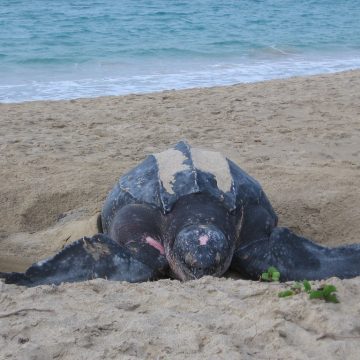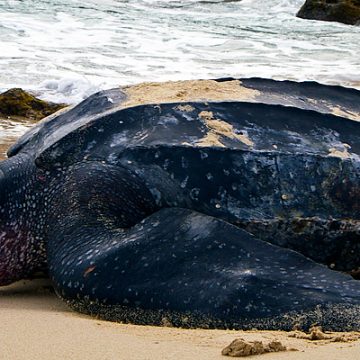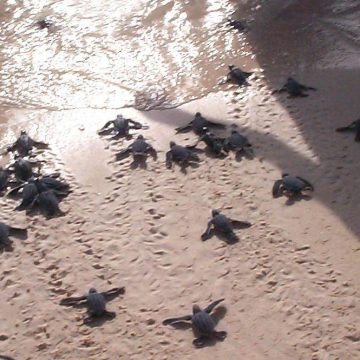Courtesy of: Aruba Daily
Two weeks ago the first Leatherback Sea Turtle of this nesting season 2013 came ashore in front of La Quinta Beach Resort. By now she has come back to make a second nest. Turtugaruba (the local Foundation for the protection of the sea turtles) placed the red-and-white barriers around the nest to prevent irresponsible drivers from crushing the eggs and to guarantee a save incubation period of two months.
The Leatherback Sea Turtles nesting on Aruba don’t live in the Caribbean, but in the Northern part of the Atlantic Ocean, off the coast of Nova Scotia, Canada, but they were born on Aruba’s beaches. After 20 – 30 years they reach maturity and then return to their natal beach in order to nest during the turtle nesting season (March – July). Normally one female makes about 7 nests per season. After laying her last nest the female returns to the cold waters of the Atlantic Ocean. She will not come back to Aruba the next year, but will skip one or two years.
All species of sea turtles are endangered and need our protection. What you can do to protect sea turtles:
• Lights out for sea turtles. Nighttime activities and artificial lighting may deter adult females from nesting. So PLEASE keep all lights off, including flashlights, flash photography and video equipment. “Sea turtles dig the dark”
• Do not drive on beaches. Not all of the turtle nests on all the beaches around Aruba are marked. Vehicles (4×4, quads) compact the sand and can crush the eggs.
• Do not litter.Do not leave any plastic cups or bags on the beach. The wind will blow it into the sea. A floating plastic bag is easily mistaken for a jellyfish, the Leatherback Sea Turtle’s favorite food.
• Remove obstacles from the beach. Obstacles as beach furniture or recreational equipment may cause nesting females to abort their nesting attempt or may even trap them. So don’t leave any beach chairs at night unattended close to the sea, but make a stack as far as possible away from the water .
• Do not disturb a nesting sea turtle. Do not attempt to touch the turtle but stay at a respectful distance (at least 10 meters). Do allow the turtle to complete the full nesting process (about two hours) and don’t be in her way when she returns to the sea.
• Do call Turtugaruba (24 hour Turtle Hotline: 5929393). If, during a late evening or early morning stroll on the beach you witness a sea turtle, or if you see turtle crawl marks, please call Turtugaruba or notify the frontdesk of your hotel. Thanks!

